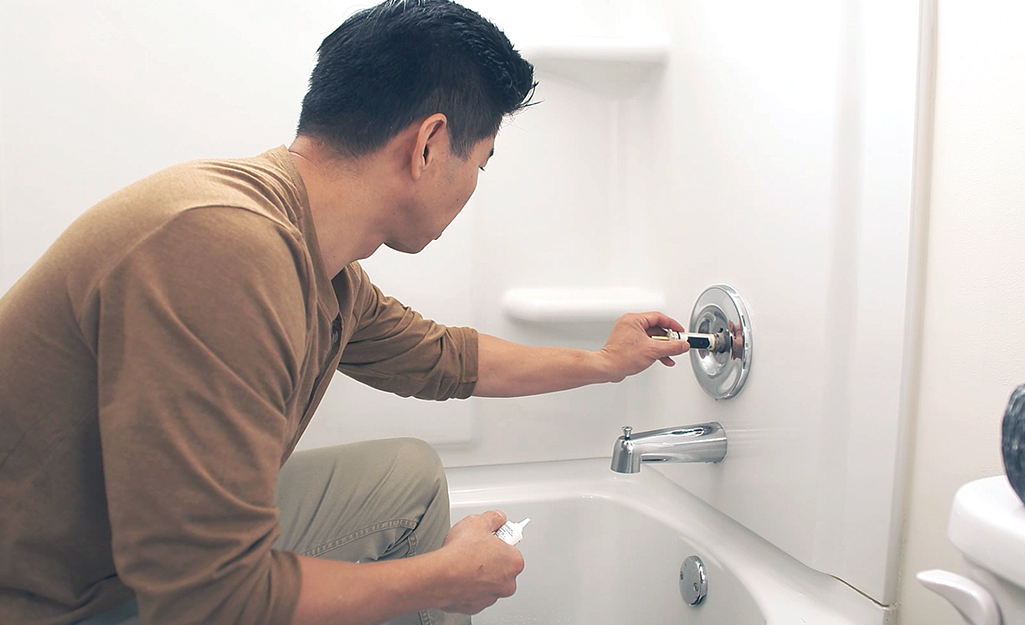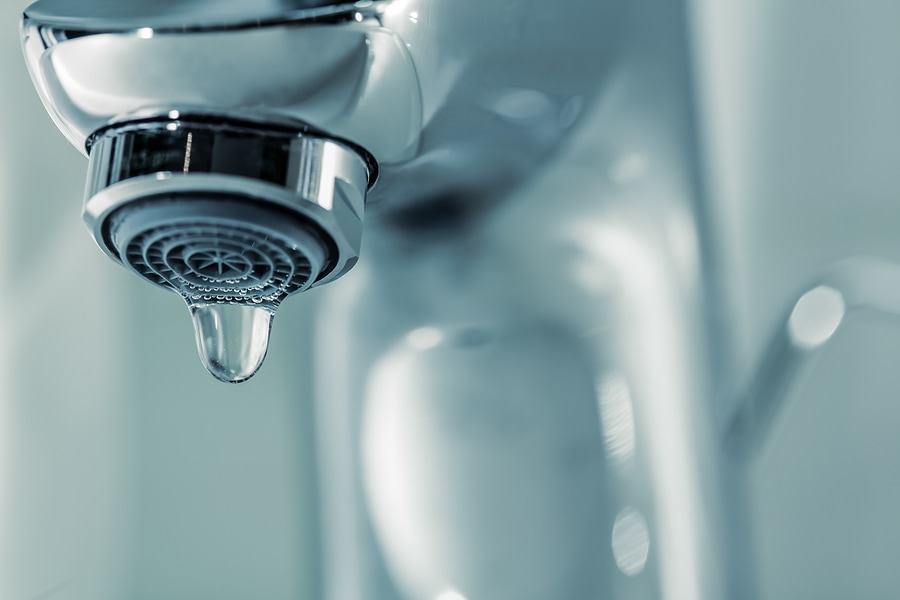What It's Critical to Mend a Broken Faucet
What It's Critical to Mend a Broken Faucet
Blog Article
How do you feel in regards to Water Dripping from Faucet: Why and How to Fix?

Trickling taps might feel like a minor inconvenience, yet their impact surpasses just the annoyance of the noise. From drainage to sustaining unnecessary financial costs and health and wellness risks, disregarding a trickling tap can result in numerous consequences. In this short article, we'll look into why it's vital to resolve this usual household issue immediately and effectively.
Waste of Water
Ecological Impact
Trickling taps contribute dramatically to water waste. According to the Environmental Protection Agency (EPA), a single tap leaking at one drip per secondly can throw away greater than 3,000 gallons of water per year. This not just stress water sources but likewise influences environments and wildlife dependent on them.
Financial Expenses
Raised Water Costs
Beyond the environmental effect, dripping faucets can pump up water costs substantially. The collected wastefulness in time equates right into higher utility costs, which can have been stayed clear of with timely repair work.
Prospective Home Damages
Additionally, long term trickling can bring about harm to components and surface areas surrounding the faucet. Water build-up can trigger staining, deterioration, and also structural problems if left unattended, causing added repair work costs.
Health and wellness Worries
Mold and Mold Development
The constant presence of wetness from a trickling tap produces an optimal environment for mold and mildew development. These fungis not only jeopardize indoor air quality but likewise posture health dangers, especially for individuals with breathing conditions or allergic reactions.
Waterborne Illness
Stagnant water in dripping taps can come to be a breeding place for germs and various other microorganisms, enhancing the danger of waterborne illness. Pollutants such as Legionella microorganisms grow in stagnant water, possibly causing severe ailments when ingested or breathed in.
Do it yourself vs. Specialist Repair
Advantages and disadvantages of DIY Repair
While some may attempt to fix a dripping faucet themselves, DIY repairs feature their own set of obstacles. Without proper expertise and tools, do it yourself efforts can aggravate the problem or cause incomplete fixings, lengthening the issue.
Advantages of Employing a Professional Plumber
Employing an expert plumber makes sure that the underlying source of the dripping tap is dealt with effectively. Plumbers have the knowledge and devices to identify and fix faucet problems successfully, conserving time and decreasing the risk of additional damages.
Step-by-Step Overview to Taking Care Of a Dripping Tap
Tools Required
Prior to attempting to repair a trickling faucet, collect the necessary devices, including a flexible wrench, screwdrivers, substitute components (such as washing machines or cartridges), and plumber's tape.
Usual Tap Issues and Their Solutions
Recognize the sort of tap and the details problem creating the drip. Typical issues include damaged washing machines, corroded shutoff seats, or malfunctioning O-rings. Refer to manufacturer instructions or online tutorials for step-by-step advice on fixings.
Safety nets
Routine Maintenance Tips
To stop leaking taps, do regular maintenance such as cleansing aerators, examining for leaks, and replacing worn-out components immediately. Furthermore, consider mounting water-saving gadgets or updating to more reliable fixtures.
Importance of Prompt Fixes
Dealing with dripping taps as quickly as they're noticed stops more water waste and possible damages, inevitably saving both water and cash in the future.
Influence On Residential Property Worth
Understanding of Well-Maintained Residential Property
Preserving a property in good condition, including attending to upkeep concerns like trickling taps, improves its perceived value and value among potential buyers or tenants.
Impact on Resale Worth
Qualities with well-maintained plumbing fixtures, including faucets, command greater resale worths in the realty market. Dealing with leaking taps can contribute to a favorable impression throughout building inspections and arrangements.
Environmental Duty
Individual Contribution to Conservation
Taking duty for fixing leaking taps straightens with more comprehensive efforts toward water preservation and environmental sustainability. Every person's actions collectively make a substantial impact on protecting priceless sources.
Lasting Living Practices
By focusing on prompt repair work and adopting water-saving practices, individuals add to sustainable living methods that profit both existing and future generations.
Final thought
Attending to a trickling tap surpasses plain comfort; it's an important step toward conserving water, lowering economic costs, and guarding wellness and residential property. Whether with DIY repairs or specialist help, acting to repair trickling taps is a tiny yet impactful way to advertise responsible stewardship of sources and contribute to a much healthier, more lasting future.
How to Fix a Dripping or Leaky Faucet
A leaking faucet is one of the most common problems that homeowners encounter, but it being commonplace doesn’t make it any less annoying. The constant drip drip drip of a leaking bathtub faucet, showerhead, or sink tap can disturb your home’s serenity. Left neglected, a dripping faucet can also result in higher water bills and discoloration or mold growth in your sink or plumbing fixtures.
Fortunately, you don’t have to be a trained plumber to know how to stop a dripping faucet. With some basic tools, replacement parts, and a little patience, leaky faucet repair is a breeze. In this article, we’ll explain what causes dripping faucets and how you can fix them.
What Causes a Leaking Faucet?
Kitchen and bathroom faucets come in all manner of designs, but most involve some combination of valves, O-rings, seals, and washers. The O-ring is usually the weakest link, but any one of these pieces can wear down over time. Heat, moisture, temperature fluctuations, minerals, mold, and movement can contribute to warping and corrosion, breaking the watertight seal. This just comes with the territory of being a homeowner. Everything is always subject to wear and tear, and some component parts of your appliances and fixtures need to be replaced on occasion. At least replacement O-rings are cheap!
More rarely, dripping faucets can be a symptom of excessively high water pressure. Were this the case in your home, you would probably notice that the leak is not isolated to one faucet. Water pressure issues are harder to resolve on your own. We recommend contacting a professional plumber if you suspect your water pressure is too high.
How to Fix a Dripping Faucet
Pipe wrench or monkey wrench Allen wrench set Screwdrivers Old towel or rag Shut off the water.
Before you do anything, you need to turn off the water to keep from drenching your kitchen or bathroom. You should find a valve under the sink and against the wall. Once you’ve turned this valve, try turning the faucet on to confirm that the water source has been cut off.
If you can’t locate your local valve for the faucet you’re working on, you can always shut off the water to the house at the main valve. Of course, this will prohibit anyone from using the sinks, showers, or toilets while you’re working on the faucet that’s giving you trouble.
Plug or block the drain.
You’ll be disassembling the faucet and removing some small bits of hardware. Plug the drain with a stopper or rag to avoid the possibility of a small screw falling into your P-trap.
Take apart the faucet assembly.
There are several varieties of kitchen and bathroom faucets, each with its own manner of assembly. For detailed instructions on how to disassemble your faucet, you can refer to the fixture’s manual or contact the manufacturer. If you know whether you have a ball, disc, cartridge, or compression faucet, you can find detailed schematics online.
In general, you need to begin by removing the faucet handles. You might notice a small screw that you’ll need to remove with a screwdriver or Allen wrench. If you don’t see any visible securing hardware, it’s likely hidden under a decorative cap that can be unscrewed or popped off with flathead screwdriver.
Remove each piece methodically, consulting a schematic when necessary. Take notes or arrange the pieces in such a way to make it easier to correctly reassemble the faucet later.
Remove the cartridge.
Once you’ve removed the handles and securing hardware, you should be able to remove the valve cartridge or stem. Some cartridges will slide right out. Other faucet models will require you to loosen a nut with a pipe wrench before you can remove the valve stem.
Examine the exposed hardware.
With the cartridge or stem removed, inspect the component parts. Check the rubber O-rings for wear and tear. Also examine the seat washer for corrosion or other damage. These pieces are usually the responsible parties for a dripping faucet, but it’s worth inspecting the other component parts while you have the faucet disassembled.
Find replacement parts.
Once you’ve identified which faucet component has failed, find an identical replacement. Your local hardware store should have O-rings, seat washers, and other standard components in stock. If you have a luxury or uncommon faucet, you may have to contact the manufacturer for a replacement part.
It’s a good idea to take your old parts with you to the hardware store so you can compare them with the store’s inventory and be sure you’re purchasing the correct replacement.
Reassemble the faucet.
With your new parts in hand, reconstruct the faucet and handles. Don’t be tempted to overtighten screws or nuts. You might think this could create a better seal, but it can instead damage or bend a delicate part of the assembly and create a new problem for you.
Turn on the water and test the faucet.
The only thing left to do is test your work. Unplug the sink, turn the water back on, and try the faucet. Congratulate yourself on a job well done!
https://www.libertyhomeguard.com/how-to-fix-a-dripping-or-leaky-faucet/

I'm very intrigued by Water Dripping from Faucet: Why and How to Fix and I hope you enjoyed reading the new entry. In case you liked our article plz make sure you remember to share it. Many thanks for your time. Please come visit our website back soon.
Report this page